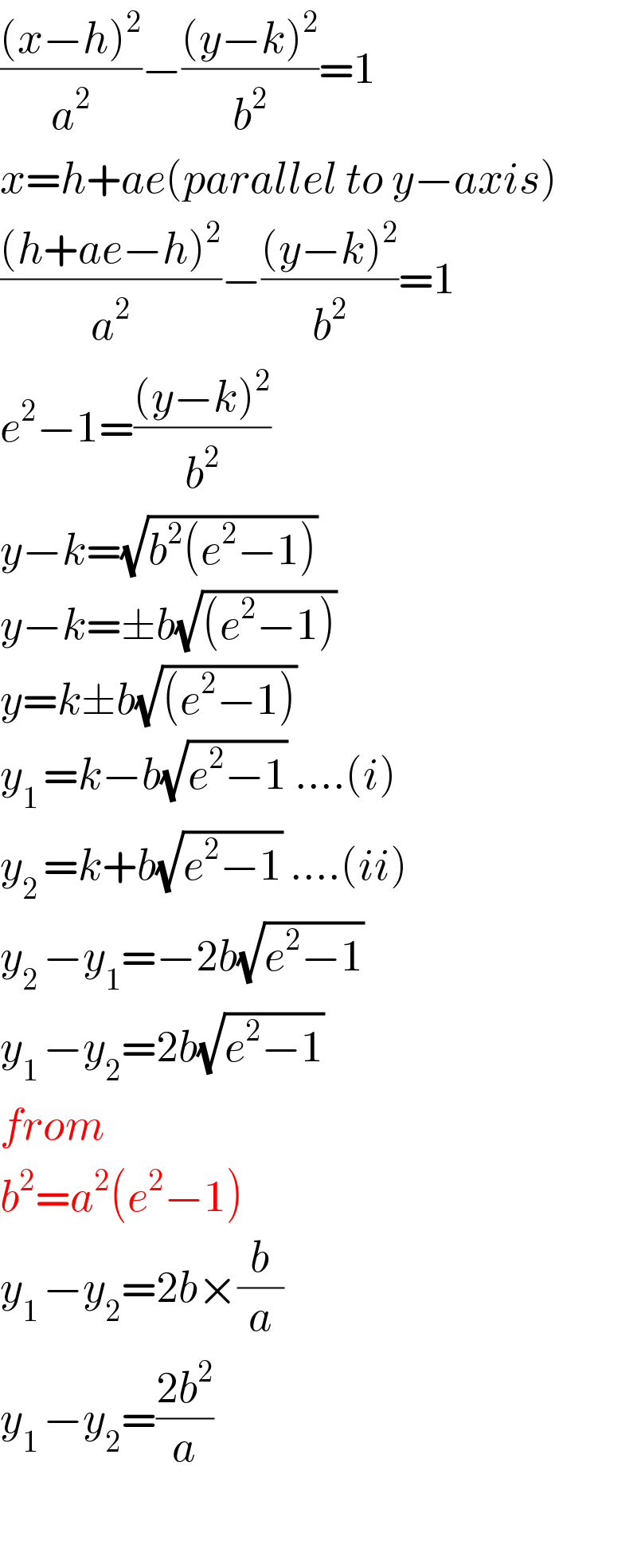
Question and Answers Forum
Question Number 51614 by peter frank last updated on 29/Dec/18

Answered by tanmay.chaudhury50@gmail.com last updated on 29/Dec/18
![for ellipse (x^2 /a^2 )+(y^2 /b^2 )=1 ditectrix is ∥ to yaxis focus(c,0) and (−c,0) so eqn of st line ∥to yaxis passing through (c,0) is x=c solve x=c and (x^2 /a^2 )+(y^2 /b^2 )=1 (y^2 /b^2 )=1−(c^2 /a^2 ) so y=±(b/a)(√(a^2 −c^2 )) now diztance between (c,(b/a)(√(a^2 −c^2 )) )and(c,((−b)/a)(√(a^2 −c^2 )) ) is=((2b)/a)(√(a^2 −c^2 )) [for ellipse c^2 =a^2 −b^2 ] =((2b)/a)×b=((2b^2 )/a) for hyperbola (x^2 /a^2 )−(y^2 /b^2 )=1 directrix is ∥ to yaxis focus(c,0) (−c,0) eqn of st line passing through(c,0) and ∥ to yaxis is x=c solve x=c and (x^2 /a^2 )−(y^2 /b^2 )=1 (y^2 /b^2 )=(c^2 /a^2 )−1 y=±(b/a)(√(c^2 −a^2 )) y=±(b/a)×b [for hyperbola c^2 =a^2 +b^2 ] y=±(b^2 /a) so latus rectum is ((2b^2 )/a)](Q51620.png)
Commented by peter frank last updated on 29/Dec/18

Answered by peter frank last updated on 29/Dec/18

